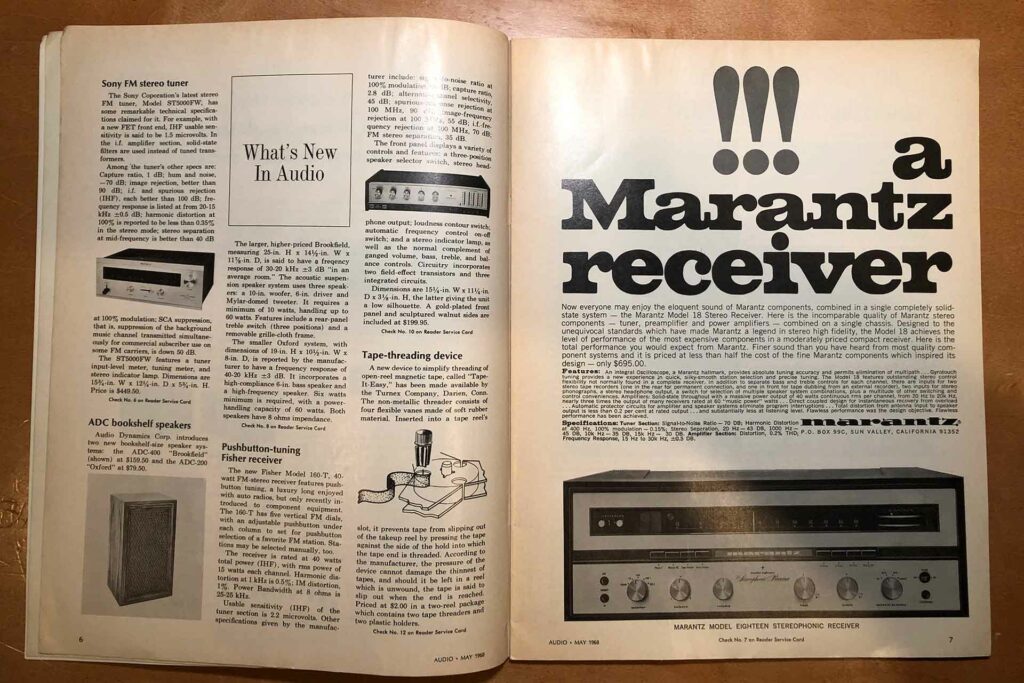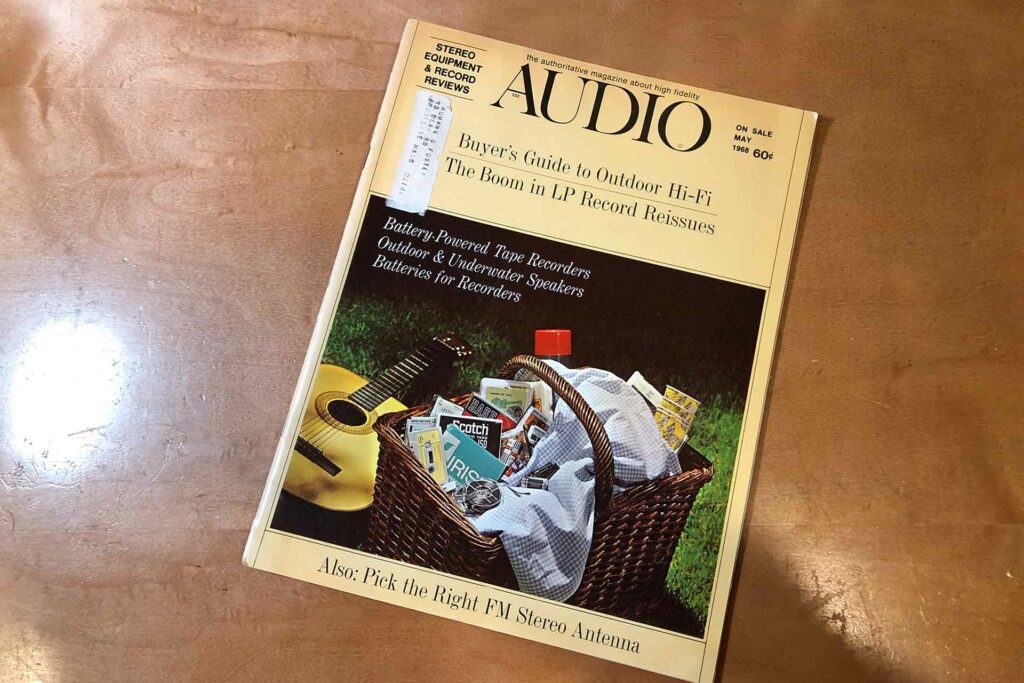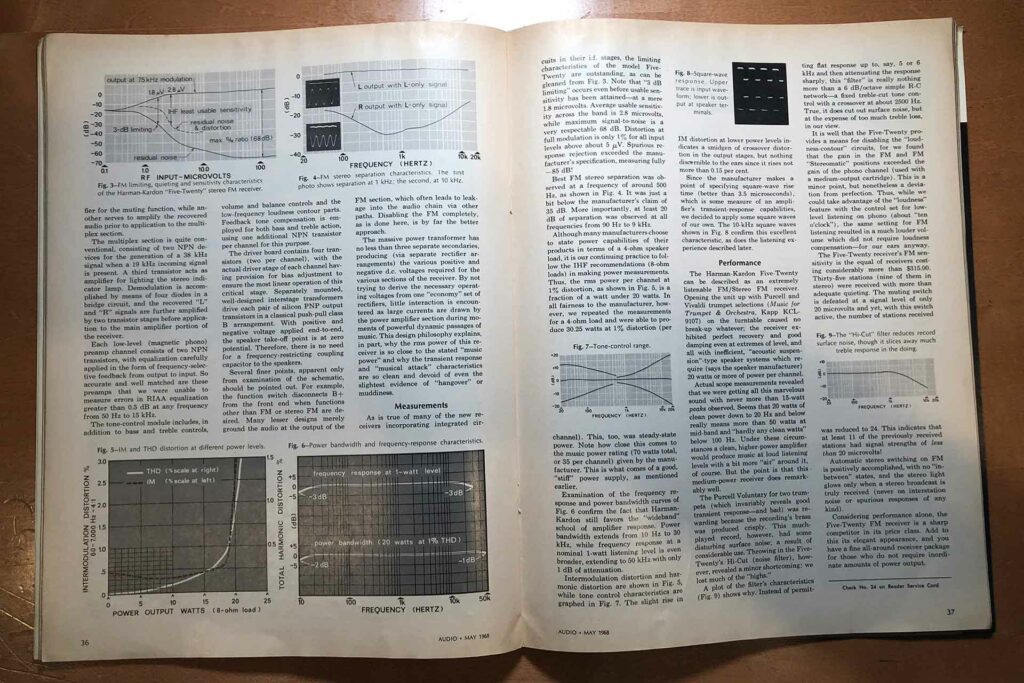If you have a pair of ears, or even only one functioning ear, it’s impossible to avoid the “I” word these days. Most of the inflation news today is bad, and that makes sense as bad news creates media-based user engagement and user engagement means more readers/viewers and that means more money, so we know why the media (traditional and social) go negative as often as they do.
We all know the consequences of inflation, though. Higher prices at the grocery store checkout. Higher prices at the pump. Higher prices for pretty much everything. When it comes to inflation in our audiophile hobby, though, does it always mean higher prices for an elevated listening experience? Not always, believe it or not. Allow me to explain.

Relatively speaking, I am an older audiophile. I purchased my first stereo system from Sam Goody’s record store in New York City back in 1968. It consisted of a Harman Kardon Nocturne 520 receiver, ($315 + $29.95 for the wood case according to Audio Magazine’s review in May 1968 issue) a Garrard SL-65 turntable with a Stanton 681 cartridge, and a pair of EPI 100 loudspeakers. The discounted, package deal cost was $499.99 plus tax at the time that I happily made the investment. In 2022 dollars that would be $4,264.40 (from https://www.usinflationcalculator.com). Nowadays, for $4,200, I can put together a pretty killer sound system.
Perusing through that same issue of Audio Magazine from over 50 years ago,there is an ad for a Marantz Model 18 receiver (with retail price of $695). That equates to $5,900 in 2022 dollars. Although Marantz no longer makes a comparable two-channel receiver, their most expensive multi-channel receiver, the Marantz SR-815, goes for $3,999, while their flagship two-channel integrated amplifier, the Marantz PM-10, lists for $8,999. So, some types of Marantz components are less expensive, while their top-of-the-line stuff is pricier now…
Could this be a trend?
I own a VPI TNT turntable that I acquired in 1991. It’s list price in 1991 was $3,000. That would be $6,537 in today’s dollars. At the time, the TNT was VPI’s top of the line model. Nowadays VPI’s flagship Vanquish turntable costs $104,000. VPI’s $1,499 Cliffwood turntable would have cost $687.86 in 1991 dollars (if they had made one in 1991). In those days VPI’s entry level model was the HW-19, which cost $1,800 in 1991 ($3,992 in today’s dollars). So VPI’s entry-level offerings have gotten much more affordable while their flagship model has gotten far pricier.
In 1984, J. Gordon Holt reviewed what was the most expensive loudspeaker system currently available in that day, the Mark Levinson HQD System, in Stereophile magazine. My best guess as to the final cost with all its parts and pieces would be around $6,000. That would be about $17,000 in 2022 money. And while that is not an insubstantial sum now, it is absolutely dwarfed by the price of today’s flagship speaker systems from the likes of Focal Sopra speakers, Magico, Wilson Audio and easily a dozen other respected audiophile speakers at 10-fold (or more) the current rate when adjusted for inflation.
I could go on and find further examples of the entry-level getting more affordable while the upper echelon gear has gotten quite a bit pricier. Why has this occurred? Modern times and the increasing gap between entry-level and state-of-the-art offerings…
While the reasons that entry-level and mid-level gear has gotten so much less expensive are pretty obvious – economies of scale coupled with advancements in technology and productivity make for cheaper goods. The reasons that high-end components have gotten to be so high-end, pricewise, is more complex. Some of the reasons are basic economics, such as the higher costs per unit due to all the elements that go into a premium component. But at the extreme cases, the “flagship envy” prices quoted seem to have little grounding in realities of production and materials costs.

What Is Estate Class Audio and Do I Need (or Care About) It?
One line of thinking I’ve heard to justify the high costs of “estate level” audio gear is that since this gear requires an equally fantastic room to house it, and that room will cost at least $1,000,000 in any first-tier urban environment, the cost of the hardware is not the primary cost involved in an estate-level system. In less politically correct terms, if you own a home worthy of a state-of-the-art audio system, the cost of that system is immaterial to you because you have so much money.
Is this just sour grapes gripes because I can’t justify the expense of the latest electronics from Solution, Audio Note, CH Precision, or flagship loudspeakers from Focal, Magico, or Wilson Audio? Not at all…. but I’m sure there are some folks who will assume that is the case.
Beyond my real-world budget, my listening room(s), like the vast majority of rooms in the world, do not have sufficient physical volume to accommodate a flagship loudspeaker system or multiple, large boxes of electronics to power them. I require a system with a more human scale, as do most music lovers and audiophiles. Simply put, I couldn’t fit the world’s reference system in my reference listening room. I would have to move and, without a Powerball win or an unknown uncle leaving me millions of dollars unexpectedly, that’s unlikely to happen anytime soon. Do I appreciate the uber high-end in the audiophile world? I sure as hell do. That’s one reason why I like going to the regional audiophile shows, as they give you a chance to “test drive” the world’s most cutting edge gear even if it isn’t realistic in my world and with my budget.

How Do You Know What to Spend on an Audio System?
For some folks, those prone to overdoing things, any less commitment than eating Ramen twice a day for two years to pay for the latest Audio Note phono preamplifier is barely entry-level audiophilia, because in their mind no amount is too much to pay for state-of-the-art audio. But for more rational and less fanatic types (like you and me) the best gauge of what you can spend is what you can afford comfortably without resorting to sitting in the middle of an empty room on a mat like the famous Steve Jobs pic.
Is there anything wrong with lusting after the latest flagship component from D’Agostino, Mark Levinson, or MBL? No. Not at all. Just as you can lust after the latest Ferrari supercar, you can admire audio technology taken to an extreme level of execution. But at the same time, would a Ferrari in your garage or a Boulder 1060 power amplifier in the middle of your living room be a rational lifestyle decision? Not for the vast majority of humans, but it is fun to dream.
Looking at what is currently available, if I had to start from scratch assembling a high-performance audio system, and I wanted something that I could enjoy for a while without getting the upgrade bug, I’d look at products like a Topping LA-90 integrated amplifier, Klipsch RP-500M II loudspeakerson Monoprice Monolith 28-inch speaker stands, an IFI Streambox, a S.M.S.L. SU-9 DAC, and tie it all together with reasonable, respected audiophile cables. Total cost should be less than $3,000. If you’re the type that can’t not tweak and modify stuff, the next audio investment would be a subwoofer or a pair of subwoofers, something like the SVS SB-1000 (read the review).
Once you’ve acquired all the hardware needed to play music, the next and most cost-effective way you can spend your audio-directed money should be focused on improving your room’s sound. I have used products from ASC and GIK Acoustics that made noticeable improvements in both the amount and cleanliness of the bass as well as improving the overall clarity and dynamics of the sound. Even a well-placed rug on a wood or tile floor can make a noticeable improvement in sonics.
Often you can achieve superior sound for free by critically placing your loudspeakers in relation to the spot where you listen and the dimensions of your room. Proper triangulation between two loudspeakers and a listener can create a situation where the subtler characteristics of the stereo illusion created two loudspeakers can be heard with greater ease due to the more accurate rendition of spatial cues and reverberation envelopes.
Am I Missing Out by Not Spending over $100,000 On My Stereo System?
Short answer… Nope. While there will hopefully always be a place for those folks who feel that excess expense in cause of audio art can never be considered a sin, for most audiophiles and music lovers there will probably be a point where enough is simply enough when it comes to the performance level of their gear and monetary expenditures allotted to that gear. That’s OK, too. For as my father told me many times “You pay your money and you makes your choice…you can have anything you want, but you can’t have everything you want.” And maybe that’s a very good thing…




I began assembling my first audio system in 1970 and am still constantly endeavoring to “upgrade” it more than 50 years later. I have developed an upgrade process with two goals: (1) to obtain perceived performance; and (2) to obtain maximum value for the precious [to me] money spent. Complicating my efforts is the fact that I live hundreds of miles from the nearest serious audio dealer. Consequently, I read a lot (print magazines, online magazines, and audio forums) and I pilgrimage to at least one audio show (typically, AXPONA) yearly.
For me, the greatest challenge in adding a new piece of equipment to my system is determining: (1) at the time, what are the weakest links among the components I own; (2) how much money can I responsibly spend on an upgrade; and (3) given the system I have, where is the tipping point of diminishing returns for the type of equipment I am considering to add?
The result of this process has generally been successful. More recent purchases have included: PS Audio’s Stellar phono preamplifier; Hana’s SL phono cartridge; Lumin’s T2 streamer/DAC; and Shunyata’s Venom PS10 power conditioner. Sometimes, I have spent more, as when I upgraded — after 15+ years — my amplifiers to McIntosh MC-611s, but, for their performance attributes, they are remarkably well-priced. Actually, there is only one component in my system, which I now use for both audio and video, that is terribly indulgent. This is my Theta Casablanca preamp/processor. I originally purchased mine in 2005 and have upgraded it three times with new boards since then. Finally, for those curious, I have a Revel Ultima speaker system, which I also purchased in 2005.
Sometimes I wonder whether an audio system can be like an old shoe — i.e., wonderfully comfortable. All I can say is that I have listened to a lot of systems over the years, and only a very few (all of which cost several hundred thousand dollars to assemble) have sounded unquestionably better than mine.
The point I am trying to make is that with caution and reason as guideposts, one can put together a very satisfying system for a cost that won’t result in destitution. Doing so takes a lot of time and some effort, but the result is very much worth it.
Good to see your considered response.
I LOVE that Lumin streamer. I am looking at one for me OR an Aurender. Cost might push me to the Aurender.
I hope you enjoy the new site. Lots of good content scheduled!!!
PS: With CES dead to audiophiles – I was looking at flights to Munich from LA for this May. Ouch. $7,500!!! And they won’t take my miles on United.